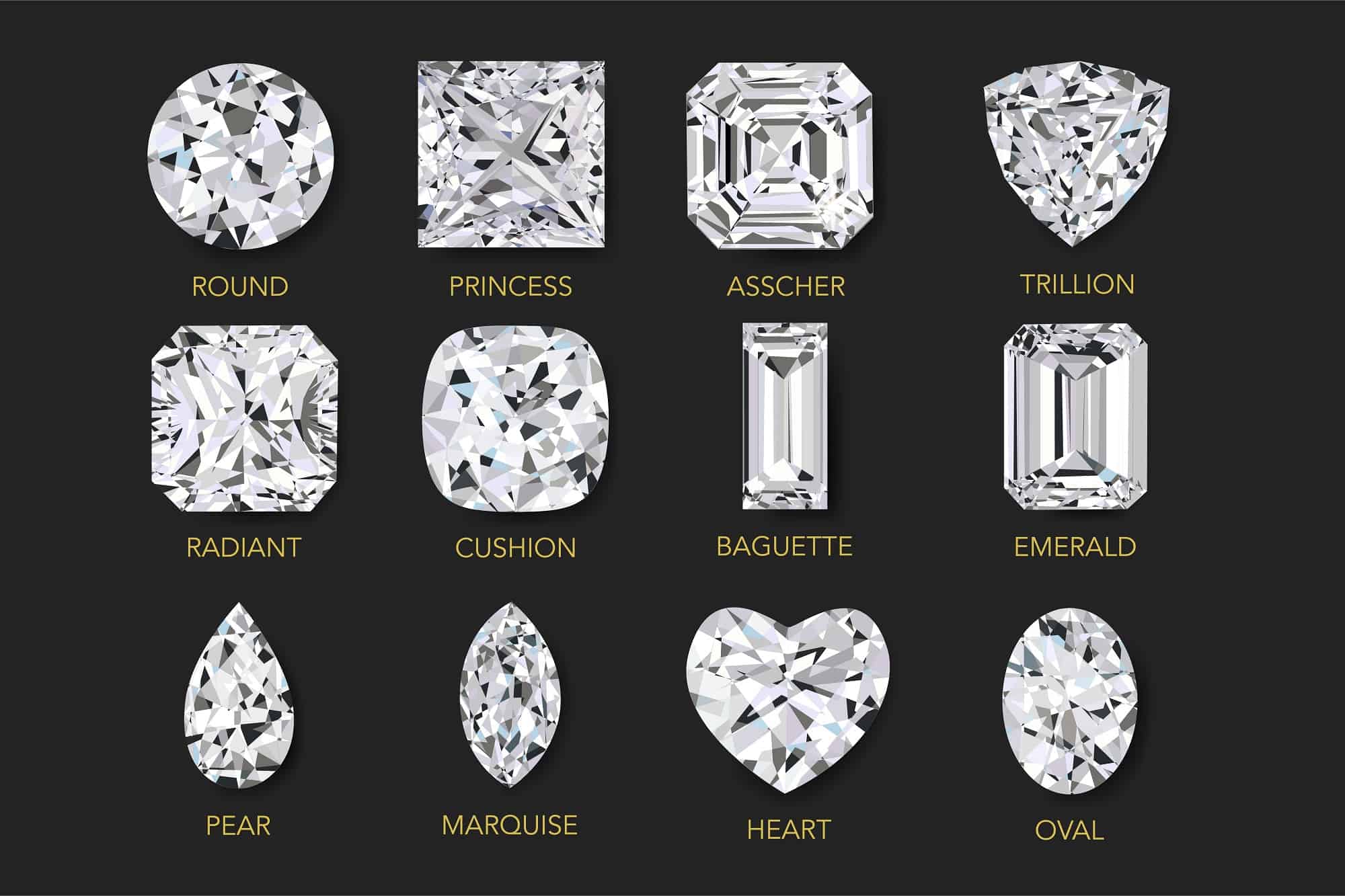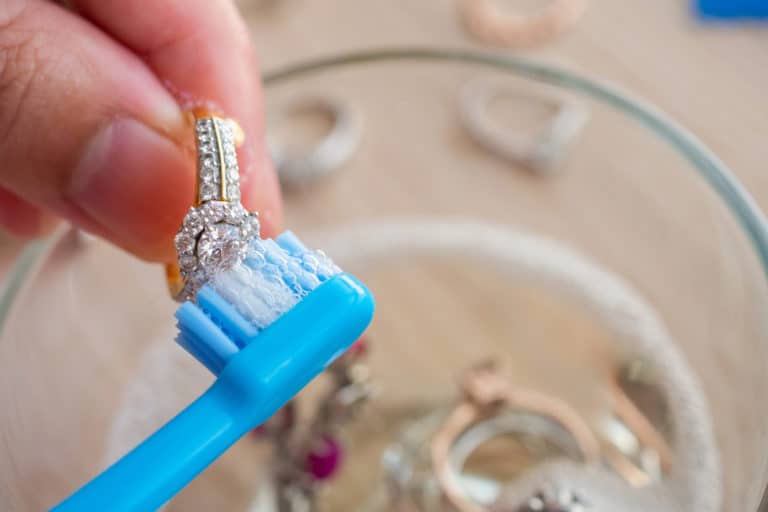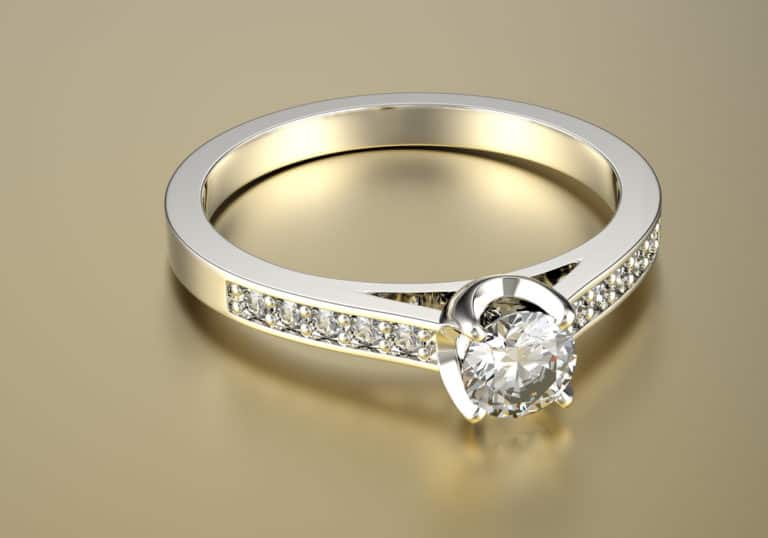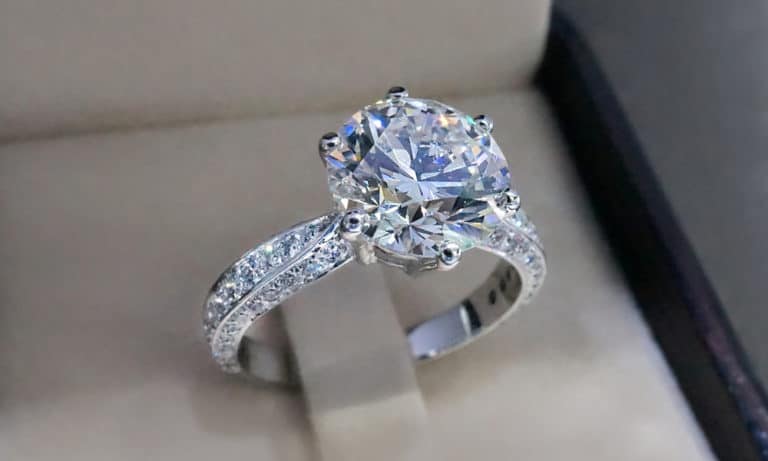
Although most people equate the terms – shape and cut when talking about diamonds, they are actually not the same. The diamond shape describes the external diamond figure and its outline. So, this gemstone can be in a pear, cushion, or round shape.
On the other hand, the diamond cut shows us diamond dimensions, symmetry, facets, and ability to reflect light. That means the same cut can be dull or brilliant and shallow or deep, without affecting the diamond shape. Let’s consider different cuts of diamond rings available on the market.
The Most Expensive Diamond
The most expensive and most respected diamond shape is definitely a perfectly symmetrical round brilliant one. Because of its beauty and precision workmanship, you can see fantastic light refraction through this gem.
Therefore, people are willing to pay more for this diamond of 1 carat than for the one in a different shape even though it is equivalent in cut quality, clarity, and color.
As we all know, the cut and the size are factors that affect the price of the diamond ring. In the case of the cut, the reason for the price difference is in the part of the rough diamond that the jeweler needs to cut during the processing process. It is necessary to waste almost 60% of the rough diamond to get a perfect round, brilliant gem.
On the other hand, you can find affordable diamond shapes that use a large piece of the rough diamond, including princess, Asscher, cushion, radiant, and emerald ones. The problem with them is in poorer clarity.
The Diamonds That Look Bigger

The elongated shaped diamonds always appear larger than round or square models because they have a more sizable surface compared to its weight.
That phenomenon is well-known as face-up size and refers to the total visible diamond area after setting it in a ring. The diamond shapes that look larger when placed in the ring are emerald, pear, marquise cut, and oval.
Among them, the marquise cut appears the largest since its length offers an impressive face-up size. Conversely, the smallest looking ones include Asscher, cushion, and princess cuts because of the square length and width ratio.
Cut Grades
Different diamond cutting increases facets, affecting how particular gemstone reflects light and creates a sparkling effect. Since the angles, shapes, sizes, and locations of facets determine how the diamond sparkles, the cut quality will directly impact the diamond light performance.
GIA (Gemological Institute of America) assigns one of four cut grades to each diamond. It affects both its appearance and price.
The cut grade will tell you everything about the diamond look, how rare it is, and the way the light dances through it. Let’s see:
- Excellent cut – Only the top 3% of all world’s diamonds can get this highest grade. They are always masterfully crafted, and their highly precise cut creates ultimate brilliance and sparkle without light leakage. Almost 55% of all diamonds in this group are round brilliant-cut gems.
- Very good cut – This grade describes a highly brilliant diamond with minimal light leakage. About 15% of all diamonds in the world get this grade.
- Good cut – Approximately 25% of diamonds have this cut grade. They have high degrees of sparkle, shine bright, and capture light well even though they leak slightly. Sometimes, the jeweler cut a diamond this way intentionally to achieve a desired look or style.
- Fair and poor cut – Unfortunately, these diamonds leak light significantly. They are too shallow or deep, so they have only a little brilliance and are not sparkling enough.
The Most Popular Diamond Shapes
1. Round brilliant-cut diamond
It is the most popular diamond shape that produces the highest brilliance level. Approximately two-thirds of the sold diamonds are in this category.
This model has incredible 58 facets with full internal reflection. The length to width ratio is a perfect 1.0 to 1.03. Keep in mind that this diamond cut quality can significantly vary, which affects its beauty.
On the other hand, this cut is a bit dull. However, you can pick out the colored stone to add some fun in too traditional appearance. Nowadays, most brides choose this shape for their engagement rings.
2. Oval cut diamond

With a similar sheen to the round diamond cut, this gem is an excellent option for you if you prefer wearing a ring with a unique shape. Traditionally, its length to width ratio is 1.30 to 1.50, but it can vary depending on your preferences.
Always check if the bow tie (dark area running across the diamond center) is too prominent. Without pointed edges, this gem is highly durable. Thanks to its elongated shape, it looks bigger than it really is.
3. Princess cut diamond

It is the second popular diamond cut shape created in 1980 from the inverted pyramid. Since it is traditionally square or rectangular, the princess offers excellent brilliance and unique distinct color in each corner.
This gemstone’s length to width ratio is 1.0 to 1.05 for a square model and 1.5 to 2.0 for a rectangular one. It has prongs on all four corners and inclusions toward the edges to prevent damage.
The great thing is that this cut offers nearly the same brilliance as the most popular round model, but the price is lower because the waste during processing is lower.
4. Marquise diamond

This cut was designed when King Louis XIV required to get a diamond that faithfully imitates the shape of his mistress’s lips.
It is still highly popular thanks to its stunning large crown and elegant narrow body shape. Its standard length to width ratio is 1.85 to 2.1. Two prongs that hold the pointed ends will hide any possible inclusions near the diamond tips.
Please pay attention to symmetry when buying this diamond because of its unusually long shape. So, the best pieces have two pointed ends aligned with each other as much as possible.
5. Emerald cut diamond

This diamond is cut the way jewelers usually design emerald cuts. Its large table surface allows abundant reflections through its long, straight steps and beautiful mirror effect.
Unfortunately, that feature results in noticeable inclusions, so you should look for a VS1 or VS2 diamond if you want to buy the emerald shaped gem.
The most common shapes are square and rectangular. The standard length to width ratio of this diamond is either 1.30 to 1.50 or 1.30 to 1.60.
6. Cushion cut diamond

It is an unusual combination of rounded edges of a square-shaped gem that exists for almost 200 years. A result is a cushion appearance that allows a full dispersion of light and beams with fire.
There are a few variations of this gemstone, including standard, modern, and modified. Its length to width ratio is 1.0 to 1.09 for a square shape and 1.15 to 1.25 for a rectangular one. Always choose this cut with a depth and a table under 70% to ensure better brilliance.
7. Asscher cut diamond

Asscher Brothers designed this unique diamond in Holland in 1902. After its one-hundredth anniversary, jewelers made a slight cut technique modification, which brought new popularity to this model.
The length to width ratio of this square diamond is 1.0 to 1.05. Remember that this cut can’t mask the gem coloration, so you should choose a minimum of an H color. On the other hand, it is highly sparkle thanks to the high crown and 58 facets.
8. Heart-shaped diamond

This shape is a symbol of love that appears balanced if it is symmetrical with a distinct point. Since the heart is smaller, particularly when set in prongs, you should avoid this diamond type with less than 0.50 carats.
Its perfect length to width ratio is 1.00. With a lower ratio, the heart will look chubbier, while the one above 1.10 makes the heart more elongated and stretched.
9. Pear-shaped diamond

It is an elegant diamond with one rounded side that tapers slightly towards one end. It is a combination of a marquise and round shape you should wear with the narrow end pointed toward the heart.
The length to width ratio is 1.45 to 1.75, but you can find a more narrow or broader shape depending on your preferences. It can excellently hide inclusions. However, always check for the level of the bow tie prominence.
10. Radiant cut diamond

Thanks to its cropped corners that provide stability and dazzling brilliance, this cut became popular in the 1980s. Traditionally, its length to width ratio is 1.0 to 1.05, but it is 1.0 to 2.0 for rectangular shapes. This shape can hide the color differences and possible inclusions, so an H color grade is an acceptable choice.
11. Baguette diamond

This diamond has 24 parallel facets and remarkable clarity. The length to width ratio of this rectangular gem is 1.50 to 2.40. You can find it in smaller sizes, and it is possible to place a few of them in the array, next to each other, which makes this cut an ideal choice for a wedding band.
12. Trillion Diamond

These diamonds are absolutely enchanting and impressive thanks to their deep fire and rich brilliance. They can diverge from popular shapes, but the typical length to width ratio is usually 1.0 to 1.10.
Choose this cut for an engagement ring, but take care to pick out the one with protected edges. Adequately placed prongs will hide possible inclusions near the points.









